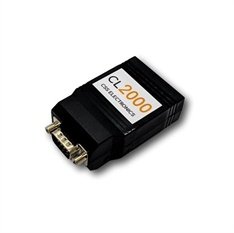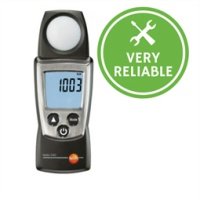CSS Electronics CL2000 Connector Bus Logger

What is a CAN bus?
A Controller Area Network (CAN bus) is a standard created to allow several devices and microcontrollers to communicate with each other's applications without a computer.
As an example, modern passenger cars can have over 65 electronic control units. These control units include the engine control unit, airbags, transmission, cruise control, audio systems, power windows, antilock braking, and mirror adjustment units (to name a few). Some are independent subsystems, while others, like an actuator control or sensor feedback, require the controllers to communicate. A CAN bus facilitates this interconnection.
Besides passenger vehicles, other examples of CAN bus applications include; trucks, buses, farming equipment, industrial equipment, electronic equipment for aviation and navigation, elevators, and medical devices.
About the CSS Electronics CL2000 CAN Bus Logger Logger
There are many CAN bus loggers available for analysing data from cars, trucks, or other CAN bus applications, and many of these loggers are complicated and expensive. By comparison, the CL2000 is affordable, feature-packed, powerful, and straightforward to use. The CL2000 performs end-to-end analysis from any controller area network and provides easy-to-interpret data you can view on your PC. To start logging, you connect the logger to the CAN bus. The logger has automatic bit-rate detection, so it will immediately begin recording the CAN data to an SD card (included).
The standard SD-card stores collected data in a simple format. Once gathered, the logged data can be transferred to a PC using a standard mini-USB cable – no special software is required.
CSS Electronics CL2000 CAN Bus Logger Features
- Compliant with CAN specifications 2.0A (11-Bit ID) and 2.0B (29-Bit ID).
- Can transmit up to 20 custom CAN messages (E.g., for use in logging OBD-II).
- Straightforward plug-and-play use with bit-rate auto-detection.
- Extensive configuration possibilities including; user-configurable message filtering, down-sampling, cyclic-logging, heartbeat signal, and runtime logging control.
- Free CANvas software: Configure, stream CAN data, convert via *.DBC.
- The serial interface allows real-time CAN-bus monitoring (incl. Wireshark integration via CANvas)
- Included Wireshark plugin allowing you to; stream/plot human-readable data (*.DBC, OBD2), hack your CAN bus, or convert live OBD2 data.
- Includes an 8 GB SD memory capacity as standard, allowing users to store 250+ million CAN bus messages. Optional upgrade to 32 GB available.
- DBC support for both logged & live data (incl. SAE J1939).
- The compact design of the logger makes it well suited for standalone logging.
- A built-in real-time clock with calendar and battery backup.
- Features a generic design compatible across protocols with upgradeable firmware.
- Small in size and lightweight. The unit is roughly 6.7 x 4.3 x 2.4 cm, weighs 45 grams, and has three status indication LEDs
CSS Electronics CL2000 CAN Bus Logger Specifications
| CAN bus Specifications | |
| Standards | Compliant with physical layer standard ISO 11898-2 |
| Identifiers | Compliant with CAN specifications 2.0A (11-Bit ID) and 2.0B (29-Bit ID) |
| Bit-Rate | Bit rates up to 1 Mbps (manually configured or automatically detected).Bit-rate auto-detection: Yes |
| Protocol Support | Protocol independent (i.e., able to log J1939, CANopen, OBD2, etc.) |
| Filters | Advanced message filtering on four configurable channels |
| Silent Mode | Yes – this does not affect CAN-bus transmission. |
| Fail-Safe | The device does not terminate the CAN-bus internally |
| CSS Electronics CL2000 Logger Specifications | |
| SD Card | 8 GB SD card |
| Real-time Clock | Yes |
| Control Signal | Logging state (enabled/disabled) can be changed runtime using a CAN-bus control message |
| Heatbeat Signal | Supports heartbeat signal to indicate logger status periodically |
| Cyclic Logging | Supports cyclic logging mode (oldest log file deleted when the file system is full) |
| Down Sampling | Channel specific message down-sampling to reduce the frequency of logged messages |
| Transmit | Transmit up to 20 customised CAN bus messages (e.g., for OBD2 queries) |
| File System | Standard FAT file system |
Ideal Applications for the CSS Electronics CL2000 Can Bus Logger
The CL2000 is ideal for medium to long-term standalone data logging and data streaming. Examples of ideal applications include:
- Vehicle development and field testing.
- Vehicle and machinery compliance monitoring, as well as fault identification.
- Industrial application monitoring.
- Reverse engineering proprietary data.
- Rare issue/ intermittitent issue identification.
Conclusion
The CSS Electronics CL2000 is a straightforward, configurable, and robust standalone CAN bus analyser suited to an assortment of applications.
Want more information on the CSS Electronics CL2000? Speak with an Instrument Choice Scientist! Call 1300 737 871 or email [email protected].
Additional Links:
CSS Electronics CL2000 Connector Cables:
- DB9 to Generic Connector Cable: This adaptor cable lets you easily connect the CL2000 to custom applications. The positive and ground power pins connect to banana plugs. The CAN-bus CAN-H / CAN-L wires are left open-ended.
- DB9 to J1939 Connector Cable (1.5 m): This adaptor cable lets you easily connect the CLX000 series to applications using the J1939 connector interface - e.g., trucks, buses, and other heavy-duty vehicles.
- DB9 to OBD2 Connector Cable (1.5 m): This adaptor cable lets you easily connect, e.g., a CL2000 to applications using the OBDII connector interface.For example, you can easily connect the CAN logger to your car's OBD pinout (below the steering wheel). Once connected, the CAN bus data logger will start recording data onto the 8 GB SD card.

Also interesting
The calibration of the sensor on the Testo 540 light intensity meter matches the spectral sensitivity of the eye, which makes the meter ideally suited to measuring light intensity around workplaces. The meter has a straightforward setup and a host of user-adjustable functions that will suit all your occupational health and safety applications associated with lighting.

The total mass of all the substances taking part in a chemical reaction will remain the same. This phenomenon is because mass cannot be created or destroyed in an ordinary chemical reaction. So, why is it that after some reactions, there is less mass in your test beaker? Watch this experiment; the Instrument Choice Scientists will reveal the truth!

